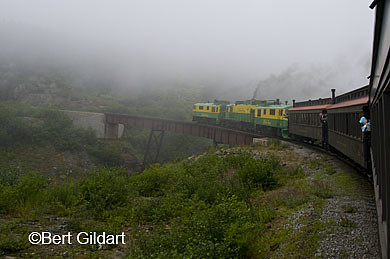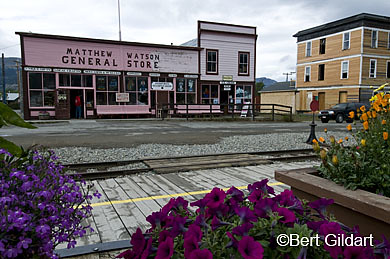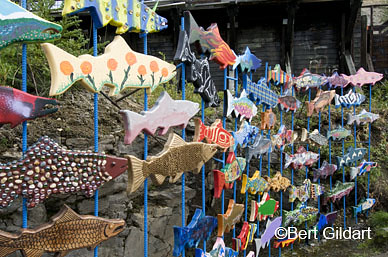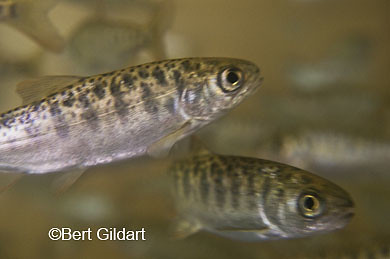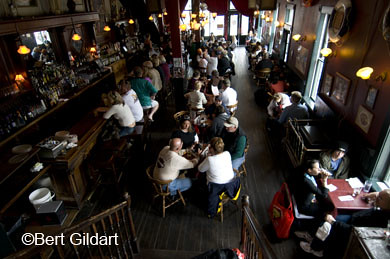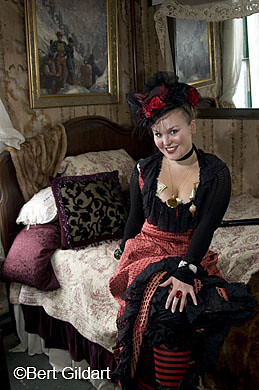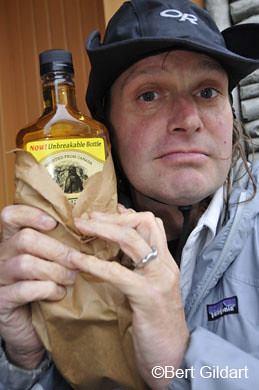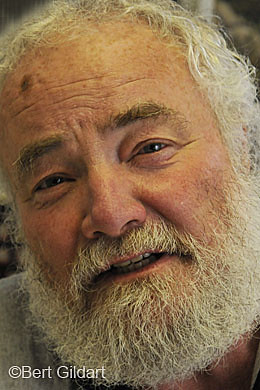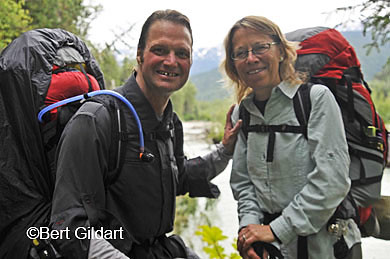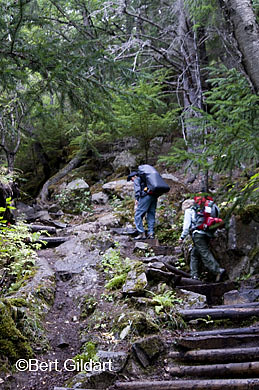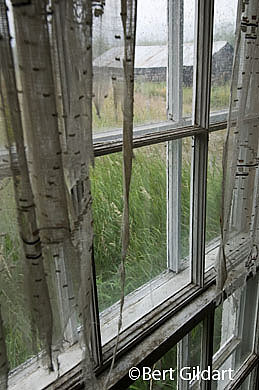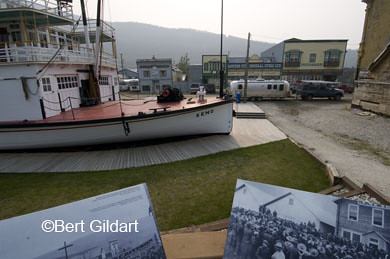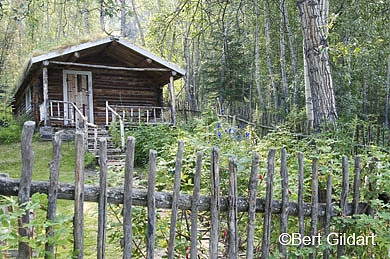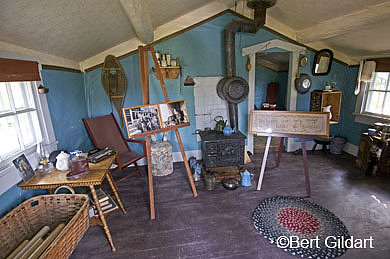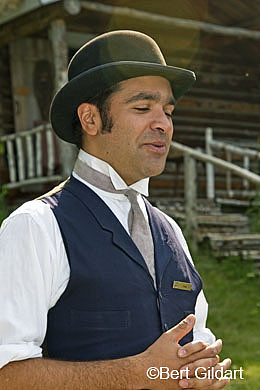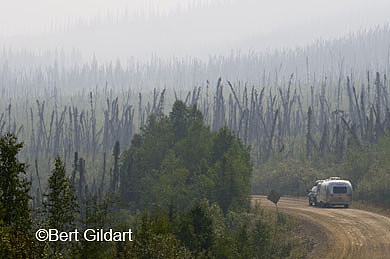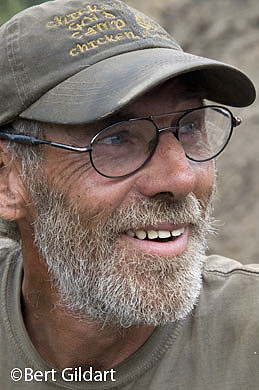Is the Section From Liard Hot Springs to Stone MountainThe Most Beautiful Segment of the Alaska Highway? Some Say It Is
posted: August 30th, 2009 | by:Bert
©Bert Gildart: Though we’ve found the entire length of the Alcan Highway to be fascinating, certain segments have their proponents. Several travelers have said they particularly enjoy the segment from Liard Hot Springs, south (or north, if you’re traveling that way) to Stone Mountain Provincial Park, a distance of about 200 miles.
To See Larger Version Click On Each Image. L To R: Steam Rises In The Cool Morning Air From Liard Hot Spring; Fall Was In The Air And The Geese Were Flying Overhead And The Bunch Berry Dogwood Was Already Producing Its Ripe Red Berries; Departing From Liard Along The Boardwalk.
Two-hundred miles is about all we drive in the course of a single day, as photography is such an important component of each day, and that takes time. But when we reached the end of the day, Janie and I both believed we’d seen an incredible number of interesting features, and with that in mind, I’m going to here provide a photo summary with extended captions. Read along, for during our travels of several days ago we saw where the Rockies end in the north, herds of woodland caribou, stone sheep, and an incredible number of beautiful lakes. These photographs were all made during the course of that drive and are essentially shown as taken at the time, meaning there are few if any PhotoShop modifications.
ABOUT MIDWAY along in our drive yesterday, we came to a section of the road that had been under construction on our way up. But now, on our way down, the 30 miles dust section had been paved. We’ve also been discovering that the frost heaving of spring had relaxed and so all the road buckling of several months had leveled out.
To See Larger Version Click On Each Image. L to R: Close up of Fireweed gone to seed, another sign that fall is fast descending; woodland caribou slow traffic, and in Stone Mountain Provincial Park-part of the Alcan-all drivers seem alert to wildlife; young bull caribou; Muncho Lake and Terminal Range of Rockies meeting Sentinel Range of British Columbia.
That made the drive around Muncho Lake a delight, and we stopped to photograph the point where the Sentinel Range ends and the Rockies begin. All this takes place at Muncho Lake, meaning “Big Lake” in Tagish, the aboriginal language of the area. Wildlife also was abundant beginning here, particularly as we approached Stone Mountain Provincial Park.
AS WELL AS ABUNDANT WILDLIFE in Stone Mountain, the mountains and lakes were beautiful, and toward the summit of one of the passes in Stone Mountain, we came to a small lake appropriately called Summit Lake.
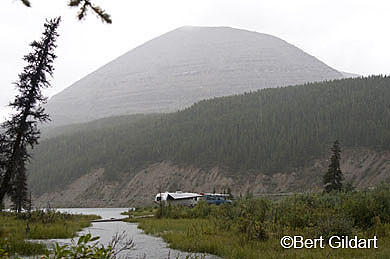
As one of the highest places along the Alaska Highway, Summit Lake was an appropriate place to park our Airstream.
Liking the solitude, we decided we’d make camp, doing so along a small creek. Before the evening was over, we saw beaver. Several trails ascend and I climbed one, stopping to gaze back over our Airstream and all that surrounded it. Though I would be hard pressed to isolate this area and proclaim it the most beautiful section of the Alcan, I’d certainly concur that it is an incredible section.
_____________________________________________________
THIS TIME THREE YEARS AGO:
*The Citadel, Preserving Quebec’s Peace
ADS FROM GOOGLE AND AMAZON AUGMENT OUR TRAVELS:
Read Comments | Comments Off














